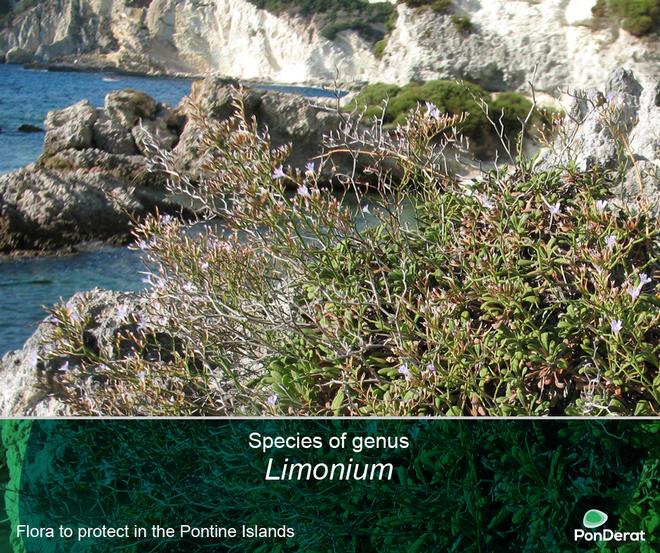
29 April 2020
Limonium species, also called sea lavender or marsh-rosemary, are typical of brackish coastal habitats, and are especially common in saltmarshes and on sea rocks. In the Mediterranean Basin, they characterise the habitat of Community interest 1240 Vegetated sea cliffs of the Mediterranean coasts with endemic Limonium spp. (92/43/EEC Habitats Directive), which occurs also in the Pontine islands.
These species are perennial herbaceous plants in the family Plumbaginaceae. They are characterised by a dense basal rosette of leaves and a branched stem that bears small flowers with pink or violet to pale purple corollas.
The genus Limonium is very important for biodiversity conservation, because many species are endemic (they occur only in specific geographical areas, sometimes very restricted), and some are at risk of extinction. For this reason, the occurrence of alien invasive species in coastal rocky habitats, for instance Carpobrotus sp. (Hottentot fig), may represent a threat to global biodiversity.
The scientific literature records two exclusive endemics to the Pontine archipelago: Limonium pontium (all islands except Ventotene) and Limonium pandatariae (in Ventotene and Zannone). Both species flower between June and August.
However, as identification is rather difficult, morphological and genetic studies are being carried out to define which species of Limonium are truly present in Lazio and to provide clear features for distinguishing between them.